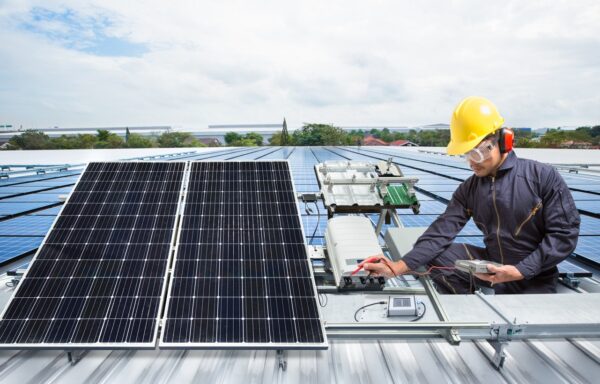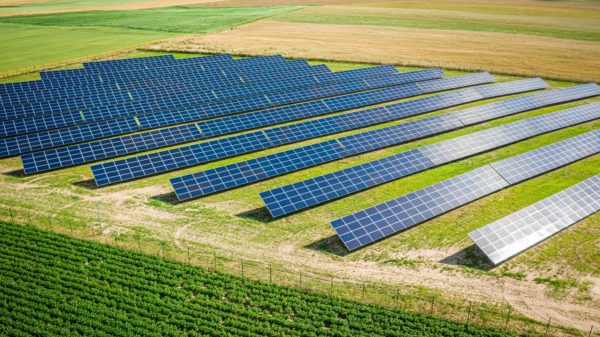
The WAIRE program is an initiative that the South Coast AQMD introduced to tackle the looming pollution problem of warehouses in the California region. With the help of the WAIRE program, the AQMD organization can provide a menu-based point system through which warehouse owners and operators can carry revamp their processes to meet environmental standards. This includes replacing carbon emission-producing machinery with better and cleaner electric options.
The Pollution Problem of Warehouses
Warehouses pollute heavily because they are storehouse facilities that utilize heavy machinery that combust gasoline and other fossil fuels such as coal and oil. Types of machinery such as forklifts, conveyor belts, generators, and others are all carbon-emitting equipment producing harmful greenhouse gasses. The sheer volume of diesel-yielding semi-trucks crowding a warehouse is another environmental threat.
Amongst one of the most polluting gasses, nitric oxide is one gas of a warehouse that causes disastrous outcomes for the communities living close to the warehouse. Not only that, but all the greenhouse emissions particles also disperse into the air and disrupt the air quality for the communities near the warehouse facilities.
These gasses are also major causes of global warming. They come under the category of greenhouse gas. They tend to damage the ozone layer, which is a layer that protects the earth from the ultraviolet rays that emerge from the sun. Global warming is the leading cause of climate change, which causes snow-capped mountains to melt faster. This leads to climatic and natural catastrophes such as flash floods, earthquakes, and other disasters.
Warehouse Pollution in the Southern Californian Areas

The communities of Southern California face drastic outcomes and climatic damage due to the annual impacts of the warehouses. Gasses such as nitric oxides, carbon, and methane are high contributors to the climatic crises and reduced air quality in Los Angeles and other southern California areas. Due to pollution, warehouses are not only creating havoc for the environment, but they are also impacting human life.
You’d think a semi-truck and a couple of goods and containers sitting static would not cause any harm, but that is far from the truth. Even while the freight trucks are parked stationary, harmful vapors release into the atmosphere and create all sorts of environmental disasters. According to a study, the Southern California region has some of the worst air quality in the country.
The high number of warehouses in southern California, paired with the equally enormous number of diesel-emitting semi-trucks that take back-and-forth trips from the warehouses, is an alarming cause of pollution and declining air quality. Not only that but there is also evidence that shows that warehouses often undergo the issues of gas tank leakages, which tend to high amounts of gasses emerging into the environment over time.
The Rise of Shipping
Over the years, e-Commerce activities have witnessed a sudden boom. The pandemic created a newfound demand for online purchases and online shopping, which enhanced the shipping industry and caused companies to create warehouses that store retail goods. Deliveries by trucks also became more common. Since the profits and businesses’ cash flow for online shopping is making it impossible to slow down business, companies and retail markets are not allowing shipping and storing activities to slow down.
For this reason, the WAIRE policy is now a critical endeavor by the policymakers. As more warehouses emerge, warehouse owners and operators are responsible for authorizing responsible practices and operations that do not harm the environment. These practices include using electric equipment, renewable energy sources, electrically charged trucks, and a better protocol for storing and handling goods at a warehouse.
Suppose their regulations are put in place by the warehouse facilities. In that case, they can eventually strive towards achieving the minimum federal air standards, which warehouses have been unable to meet for the past 30 years. The launch of the WAIRE Program has bought forward a new wave of optimism within the communities that reside in the industrial districts of California. They can start to imagine a healthier future for their families and children.
This new policy encourages warehouse operators and owners to quit their reliance on combustion engines and mandate practices that make the warehousing process more eco-friendly. This way, big corporations can start being more considerate of the less fortunate communities living near industrial areas.
With the implementation of the WAIRE policy, regulators can start to initiate the transition in the warehouse and logistics industry. They can also introduce an urgent shift to clean energy procedures such as solar power. This is a responsibility that the South Coast Air Quality takes responsibility for with the help of the WAIRE program.
Nitrogen Pollution on the Rise
Nitrogen pollution causes the formation of air pollutants, which is a major component of air quality and smog. The amount of particle matter in the air is significantly greater than the World Health Organization’s recommended concentration threshold.
The detrimental health impacts of air pollution outside are highly costly. In water bodies with nitrogen pollution, algae and vegetation develop unnaturally. As a consequence of these enormous growths, bodies of water begin to confront dead zones or areas of water that do not support aquatic life. Fish and other marine life cannot flourish in this environment.
Around 880 nautical dead zones have been identified globally, and the number is growing. The WAIRE judgment and other institutional-level steps are the only way to address these concerns on a large scale. High nitrogen emissions can also lead to soil pollution by increasing soil acidity and harming the soil’s microbiological components.
These microbial communities provide the soil with the potential to support life. It is generally understood that a change in atmospheric nitrogen may harm diversity in both aquatic and terrestrial environments. This is due to nitrogen-using plants’ proclivity to engulf and dethrone other plant species. Nitric oxide, like carbon dioxide, is a potent greenhouse gas that causes pollution.
This gas also harms the ozone molecules, which protect Earth’s inhabitants from harmful UV rays emitted by the sun. The logistics business can reduce nitrogen pollution owing to rules and regulations such as the WAIRE program, enabling individuals to relax and improve the environment in the long run finally.
A Shift to e-Trucks

Switching to electric trucks will lead to significant savings in energy costs and, as a result, in ownership costs. This is because diesel fuel is significantly more costly per mile in many regions than power production. This means that even large batteries will become cost-effective very quickly.
The most cost-effective use for electric vehicles is in carrying big goods. According to the research, electric cars can deliver a greater overall reduction in energy expenditures the larger the cargo and the more intensively they are used.
Furthermore, electric trucks would not pollute as they moved through cities. Local air pollution caused by diesel automobiles can disproportionately damage low-income populations. Similarly, if electric cars were fueled by renewable energy, particularly solar energy, at total capacity, they may gradually become carbon neutral.
A Renewable Energy Motive

The traditional warehouse has evolved. Sustainability has taken hold and has become the primary focus of all enterprises. When improvements, such as the switch to renewable energy, are done gradually, warehouse sustainability improves over time. Additional changes are required in the future to enhance energy and resource utilization in more environmentally friendly methods.
Even if employing renewable energy such as commercial solar is one of the most critical actions businesses must take for the future, the supply chain may be enhanced in various ways. The key challenges that should be emphasized are technology, the environment, and public health. Warehouses may therefore be made entirely sustainable.
According to a 2018 Environmental Protection Agency report, businesses were accountable for 22 percentage points of all greenhouse gas emissions (EPA). Storage facilities and distribution networks contribute to transportation, which is why this share is unparalleled. The advancement of warehouse performance must aim to avoid this sort of harm.
Warehouse equipment is both wasteful and unsafe. Although greener, battery-powered choices may eventually develop, managers may take a more direct approach. Using Internet of Things (IoT) sensors, equipment operation may be monitored, and preventative maintenance simplified. The WAIRE initiative encourages warehouse owners and operators to choose environmentally friendly solutions.
Turn to Clean Solar Energy with Coldwell Solar

Solar electricity may be extremely beneficial in the warehouse and commercial applications. Clean solar energy is quickly becoming a highly cost-effective method of generating electricity. Solar can be cheaper than fossil fuels for warehousing and supply chain activities. Despite being a more affordable and cleaner option, it only provides 3% of the world’s power.
The South Coast AQMD created the WAIRE Program to minimize nitrogen and other harmful emissions from warehouses. They made the WAIRE Points system to reward factory owners and operators. When warehouse facilities incorporate sustainable alternatives such as solar energy equipment or environmentally friendly autos, points are awarded.
Coldwell Solar provides solar energy solutions to warehouses for them to meet WAIRE Program criteria. We understand how using alternative energy-producing equipment reduces nitrogen emissions. As a result, we urge that warehouses in South California build solar-powered energy systems.

